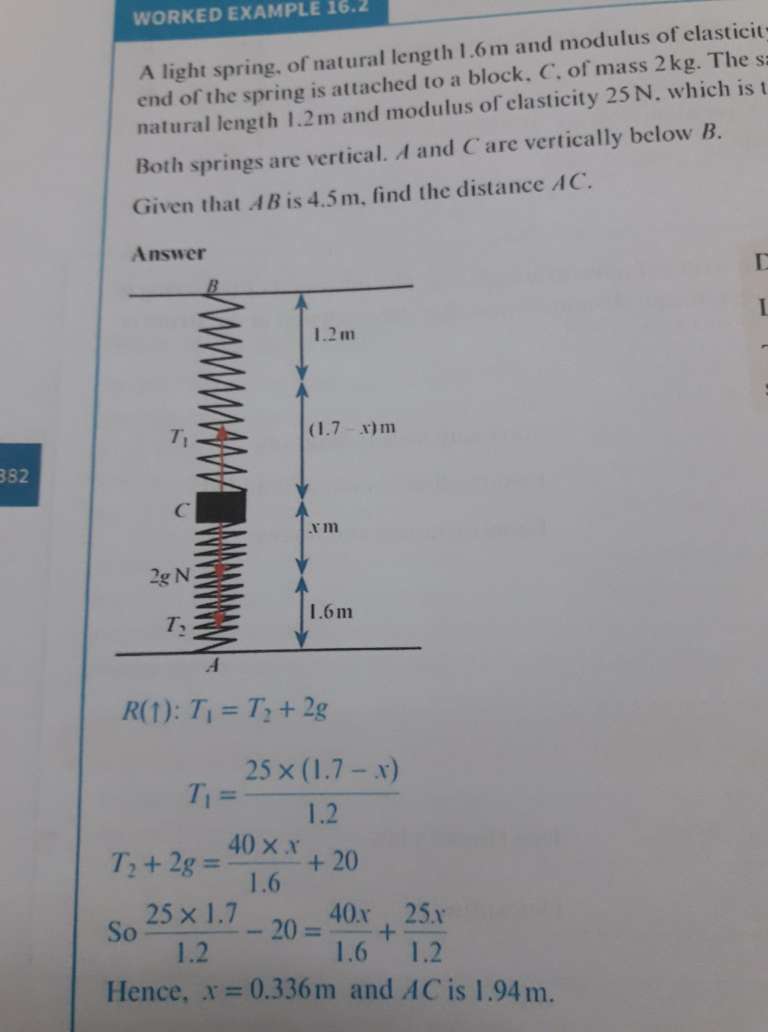This is an example question from the book that I dont understand. (I have attached a photo of the problem).
The question says this : "A light spring, of natural length 1.6m and modulus of elasticity 40N, is attached to a floor at point A. The other end of the spring is attached to a block, C, of mass 2kg. The same block is attached to a second light spring, of natural length 1.2m and modulus of elasticity 25N, which is then attached to a ceiling at point B. Both springs are vertical. A and C are vertically below B. Given that AB is 4.5m, find the distance AC."
The part I dont understand is that why in the diagram and their solution, do they have T2 pointing downwards. If the bottom spring is compressed, wouldn't the tension T2 point upwards to balance the weight of the mass?

